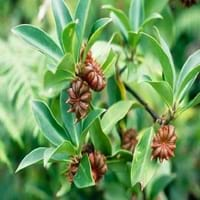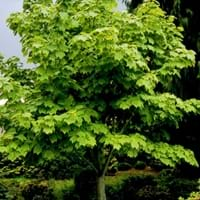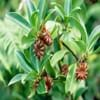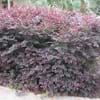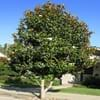Life Span
Perennial
Perennial
Type
Broadleaf Evergreen
Tree
Origin
Southeastern United States
Northeastern United States, Mid-Atlantic United States, Southeastern United States, Canada
Types
Not Available
Not Available
Habitat
Dappled Shade, Sunny Edge, Woodlands
moist forests, Slopes
USDA Hardiness Zone
6-9
3-7
AHS Heat Zone
Not Available
7-1
Sunset Zone
21,22
Not Available
Habit
Upright/Erect
Upright/Erect
Flower Color
Yellow green
Yellow, Yellow green
Flower Color Modifier
Bicolor
Bicolor
Fruit Color
Green, Brown
Green, Brown
Leaf Color in Spring
Olive
Light Green
Leaf Color in Summer
Olive
Green
Leaf Color in Fall
Olive
Yellow
Leaf Color in Winter
Olive
Not Available
Leaf Shape
Long, Alternate
Maple shaped
Plant Season
Spring, Summer, Fall, Winter
Not Available
Sunlight
Full Sun, Partial Sun, Partial shade
Partial Sun, Partial shade
Type of Soil
Clay, Loam, Sand
Loam
The pH of Soil
Acidic, Neutral
Acidic, Neutral
Soil Drainage
Average
Well drained
Bloom Time
Late Spring, Early Summer
Early Spring, Spring
Tolerances
Not Available
Not Available
Where to Plant?
Ground
Ground
How to Plant?
Seedlings
Layering, Seedlings, Stem Cutting
Plant Maintenance
Medium
Medium
Watering Requirements
Average Water Needs, Do Not over Water
Requires regular watering
In Summer
Lots of watering
Lots of watering
In Spring
Moderate
Moderate
In Winter
Average Water
Average Water
Soil pH
Acidic, Neutral
Acidic, Neutral
Soil Type
Clay, Loam, Sand
Loam
Soil Drainage Capacity
Average
Well drained
Sun Exposure
Full Sun, Partial Sun, Partial shade
Partial Sun, Partial shade
Pruning
Remove damaged leaves, Remove dead branches, Remove dead leaves
Prune if you want to improve plant shape
Fertilizers
Compost
All-Purpose Liquid Fertilizer
Pests and Diseases
Fungal Diseases
Anthracnose, Bacterial leaf scorch, Bleeding canker, Decline, Fomes root rot, Ganoderma root rot, Laetiporus root rot, Leaf spot, Powdery mildew, Red blotch, Tar spot, Verticillium Wilt
Plant Tolerance
Drought
Drought
Flowers
Insignificant
Insignificant
Flower Petal Number
Single
Single
Foliage Texture
Coarse
Coarse
Foliage Sheen
Glossy
Matte
Attracts
Dogs
Not Available
Allergy
Hypertonia, Nausea, Spasms, Vomiting
Asthma, Runny nose, Skin irritation
Aesthetic Uses
Beautification, Borders
Showy Purposes
Beauty Benefits
Good for skin
Not Available
Environmental Uses
Erosion control
Air purification
Medicinal Uses
Antibacterial, Appetizer, Expectorant, Homeopathy
Antirheumatic, Cold, Cough, Emetic, gonorrhoea, Kidney problems, Pectoral, Swelling, Vomiting
Part of Plant Used
Fruits
Leaves, Sap
Other Uses
Used as essential oil, Used in flavouring curries, teas, Used to sweeten the breath
Used as Ornamental plant, Used as preservative
Used As Indoor Plant
No
No
Used As Outdoor Plant
Yes
Yes
Garden Design
Hedges, Mixed Border, Screening, Wind Break, Tropical, Wildflower
Feature Plant
Botanical Name
ILLICIUM parviflorum
ACER pensylvanicum
Common Name
Chinese Star Anise, Badiam
Moosewood, striped maple, moose maple
In Hindi
चक्र फूल
धारीदार मेपल
In German
Sternanis
gestreifte Ahorn
In French
Anis étoilé
érable rayé
In Spanish
Anís estrellado
arce rayado
In Greek
Γλυκάνισο
ριγέ σφενδάμου
In Portuguese
Star Anise
plátano listrada
In Polish
Anyż
paski klonu
In Latin
Star Anise
alba acernis
Phylum
Magnoliophyta
Magnoliophyta
Class
Magnoliopsida
Magnoliopsida
Order
Illiciales
Sapindales
Family
Illiciaceae
Aceraceae
Clade
Angiosperms
Angiosperms, Eudicots, Rosids
Tribe
Illicieae
Not Available
Subfamily
Illicioideae
Not Available
Number of Species
Not Available
Not Available
Importance of Star Anise and Moosewood Tree
Want to have the most appropriate plant for your garden? You might want to know the importance of Star Anise and Moosewood Tree. Basically, these two plants vary in many aspects. Compare Star Anise and Moosewood Tree as they differ in many characteristics such as their life, care, benefits, facts, etc. Every gardener must at least have the slightest clue about the plants he wants to plant in his garden. Compare their benefits, which differ in many ways like facts and uses. The medicinal use of Star Anise is Antibacterial, Appetizer, Expectorant and Homeopathy whereas of Moosewood Tree is Antirheumatic, Cold, Cough, Emetic, gonorrhoea, Kidney problems, Pectoral, Swelling and Vomiting. Star Anise has beauty benefits as follows: Good for skin while Moosewood Tree has beauty benefits as follows: Good for skin.
Compare Facts of Star Anise vs Moosewood Tree
How to choose the best garden plant for your garden depending upon its facts? Here garden plant comparison will help you to solve this query. Compare the facts of Star Anise vs Moosewood Tree and know which one to choose. As garden plants have benefits and other uses, allergy is also a major drawback of plants for some people. Allergic reactions of Star Anise are Hypertonia, Nausea, Spasms and Vomiting whereas of Moosewood Tree have Asthma, Runny nose and Skin irritation respectively. Having a fruit bearing plant in your garden can be a plus point of your garden. Star Anise has no showy fruits and Moosewood Tree has no showy fruits. Also Star Anise is not flowering and Moosewood Tree is not flowering . You can compare Star Anise and Moosewood Tree facts and facts of other plants too.
